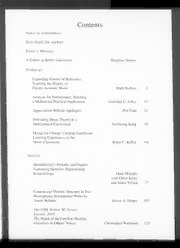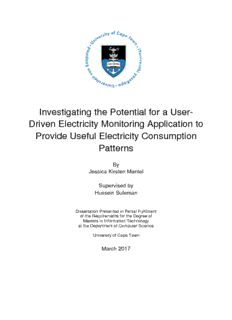
Preview University of Cape Town
n Investigating the Potential for a User- w o Driven Electricity Monitoring Application to T Provide Useful Electricity eConsumption p a Patterns C f o By y Jessica Kirsten Mantel t i s r e Supervised by v Hussein Suleman i n U Dissertation Presented in Partial Fulfilment of the Requirements for the Degree of Masters in Information Technology at the Department of Computer Science University of Cape Town March 2017 n w The copyright of this thesis vests in the author. No o T quotation from it or information derived from it is to be published without full acknowledgeement of the source. p The thesis is to be used for private study or non- a C commercial research purposes only. f o Published by the Universit y of Cape Town (UCT) in terms y t of the non-exclusive license granted to UCT by the author. i s r e v i n U Plagiarism Declaration I know the meaning of plagiarism and declare that all the work in the document, save for that which is properly acknowledged, is my own. i Abstract Conventional electricity usage monitoring involves complex data collection via costly and intrusive hardware installation. There is a perceived need for a simple and affordable tool that provides users with feedback about their electricity consumption without the hardware installation. This study involves the design and development of a user driven mobile and desktop application that provides users with information on electricity usage patterns and historical trends. The application was designed using Ionic Framework, a tool ideal for the design of hybrid applications that are compatible with both desktop Windows devices and mobile Android devices. The goal of the research will be that the user will track their appliance usage on the application whilst taking electricity meter readings at regular intervals to calculate appliance-specific consumption. The data is added to the mobile or desktop application, which then provides users with a comprehensive display of the electricity usage patterns and trends. The objective is to provide users with the information required so that they can start understanding their electricity consumption better and it is a first step towards empowering the user to make smart decisions at home that will reduce their electricity consumption. The USE (Usefulness, Satisfaction, Ease of Use and Ease of Learning) questionnaire was used to gather user experience feedback from participants about user experience. The USE questionnaire tests the perceived Usefulness, Satisfaction, Ease of Use and Ease of Learnability The 31 individuals who initially volunteered to take part in the study are all residents of the City of Cape Town Municipality, aged between 20 and 80 years old. Not all participants are home owners; some are tenants in their premises. The sample group was selected on a convenience basis, and social media group posts were also used to reach individuals with a potential interest in the study. The two motivating factors that were considered to identify individuals who could potentially have an interest in the study were cost saving and environmental impact. 21 volunteers completed the study and returned the USE questionnaire. The study findings showed that all participants believe that using the application helped them to better understand their electricity consumption. ii Contents Plagiarism Declaration i Abstract ii List of Tables v List of Figures v 1. Introduction 1 1.1. Motivation 1 1.2. Scope of the Study 4 1.3. Problem Statement 4 1.4. Research Question 4 1.5. Research Design 4 1.6. Thesis Outline 5 2. Literature Review 7 2.1. Chapter Overview 7 2.2. Resident Profiling in Relation to Energy Usage 8 2.3. Monitoring Household Electricity Usage with the Resident as an Active Participant 10 2.4. Home Energy Management Systems 12 2.5. Non-intrusive Load Monitoring 14 2.6. Fixture Assignment Problem 15 2.7. Estimations and Simulations of Electricity Usage 16 2.8. Models for Energy Efficient Buildings 18 2.9. Electricity-related Information and Communication Technology for Development 18 2.10. ICT in the home 19 2.11. Use of mobile or desktop applications for any monitoring purposes 20 2.12. Gaps and Opportunities 21 2.13. Chapter Summary 22 3. Design and Implementation 23 3.1. Chapter Overview 23 3.2. Design of the Application 23 3.2.1. User-centred design process 23 3.2.2. Identification of Requirements: Focus Group 1 24 3.2.3. Exploring tools for application development 27 3.2.4. Design of the User Interface 31 3.2.5. Iterative Design – The Second Focus Group 34 iii 3.2.6. Refinement of the Functionality of the Application 34 3.2.7. The Algorithm used to Calculate Electricity Consumption 49 3.3. Experimental Design 51 3.3.1. Experimental procedure 51 3.4. Chapter Summary 52 4. Evaluation and Results 54 4.1. Pilot Study 54 4.2. Study participants 54 4.3. Data Collection Methods 55 4.4. Results and Analysis 56 4.4.1. Analysis of the USE Questionnaire 56 4.4.1.1. Usefulness 57 4.4.1.2. Satisfaction 60 4.4.1.3. Ease of Use 62 4.4.1.4. Ease of Learning 64 4.4.1.5. Other Findings 66 4.4.2. Discussion of Two Case Studies 66 4.5. Chapter Summary 69 5. Conclusion 70 5.1. Answers to Research Question 70 5.2. Discussion and Implications 70 5.3. Future Work 70 6. Bibliography 72 7. Appendices 76 7.1. Appendix 1: Step-by-step guide 76 7.2. Appendix 2: USE Questionnaire 80 7.3. Appendix 3: User Consent Forms 83 7.4. Appendix 4: Ethics Approval 92 7.5. Appendix 5: Permission to involve UCT students in the experiment 93 7.6. Appendix 6: Questionnaire Responses 94 iv List of Tables Table 1: Contents of the application's database in SQLite ................................................................... 35 Table 2: Median and mode for each usefulness-related question ........................................................ 57 Table 3: Median and mode for each satisfaction-related question ....................................................... 60 Table 4: Median and mode for each ease of use-related question ...................................................... 62 Table 5: Median and mode for each ease of learning-related question ............................................... 64 List of Figures Figure 1: Pie chart showing a breakdown of Cape Town’s electricity consumption in 2012. ................. 2 Figure 2: User Centred Design Concept ............................................................................................... 23 Figure 3: Screenshot of the Ionic Creator dashboard (Ionic Creator, n.d) ............................................ 29 Figure 4: File Structure of the Application ............................................................................................. 30 Figure 5: Screenshot of the user interface on the desktop Electricity Monitoring Application .............. 31 Figure 6: Screenshot showing the final user interface design for the mobile application ..................... 31 Figure 7: Schematic of the Electricity Monitoring Application ............................................................... 38 Figure 8: Mobile Screenshot - Appliance Timer tab when the application is opened ........................... 39 Figure 9: Desktop Screenshot - Appliance Timer tab when the application is opened ........................ 40 Figure 10: Mobile Screenshot - Appliance Timer tab when an appliance’s toggle is switched on ....... 41 Figure 11: Desktop Screenshot - Appliance Timer tab when an appliance’s toggle is switched on ..... 41 Figure 12: Mobile Screenshot - Appliance Timer tab when an appliance’s toggle is switched off ....... 42 Figure 13: Desktop Screenshot - Appliance Timer tab when an appliance’s toggle is switched off ..... 42 Figure 14: Mobile Screenshot - updated stacked bar chart in the Feedback tab ................................. 43 Figure 15: Desktop Screenshot - updated stacked bar chart in the Feedback tab.............................. 43 Figure 16: Desktop Screenshot 5 - capturing a new electricity reading in the Appliance Timer tab .... 44 Figure 17: Mobile Screenshot - capturing a new electricity reading in the Appliance Timer tab ......... 45 Figure 18: Mobile Screenshot showing the updated Appliance Timer tab once a new electricity meter reading has been captured ................................................................................................................... 45 Figure 19: Desktop Screenshot showing the updated Appliance Timer tab once a new electricity meter reading has been captured ......................................................................................................... 46 Figure 20: Desktop Screenshot of the Appliance Time tab demonstrating the clearing of the all data 46 Figure 21: Mobile Screenshot of the Appliance Time tab demonstrating the clearing of the all data ... 47 Figure 22: Desktop Screenshot showing the cleared graph in the Feedback tab ................................ 47 Figure 23: Mobile Screenshot showing the cleared graph in the Feedback tab ................................... 48 Figure 24: Desktop Screenshot showing a slide in the step-by-step guide in the Help tab .................. 48 Figure 25: Mobile Screenshot showing a slide in the step-by-step guide in the Help tab .................... 49 Figure 26: Participants’ responses to usefulness-related questions .................................................... 59 Figure 27: Participants’ responses to satisfaction-related questions .................................................... 61 Figure 28: Participants’ responses to ease of use-related questions ................................................... 63 Figure 29: Participants’ responses to ease of learning-related questions ............................................ 65 Figure 30: Use Case 1 - Graph showing a study participant’s electricity costs for the week ............... 67 Figure 31: Use Case 2 - Graph showing a study participant’s electricity costs for the week ............... 67 v 1. Introduction 1.1. Motivation The topic of energy consumption in a residential setting has been researched over a long period of time (Vega et al. 2015) with studies about human behaviour and energy consumption dating back to 1975 (Guerin et al. 2000). A renewed focus on electricity consumption and the sustainability thereof has recently emerged because of factors such as: 1. A rising awareness of the impact of traditional sources of electricity, for example the burning of fossil fuels, on the environment. If there are no further international policies put in place and efforts made to reduce the consumption of resources, energy related carbon dioxide emissions are expected to rise by 78% between 2005 and 2050 (De Boeck et al. 2015). 2. Diminishing natural fuel reserves (Berges, 2011). 3. Growth in the demand for access to electricity (Beaudin, 2015). 4. The increase in the cost of electricity, which goes hand in hand with the increase in electricity demand and a diminishing supply. These factors sum up two principal motivations for monitoring, understanding and controlling electricity consumption, namely environmental conservation and cost reduction. The need to limit the consumption of electricity is applicable to all economic sectors, such as residential, industrial, commercial, transport, agriculture and services. As substantial as the electricity demand from the commercial or industrial sector may be, the total electricity demand from the residential sector is also a major contributor. A large portion of the total energy that reaches the end user is consumed by the residential sector. In developed countries like the USA, the residential sector accounted for 37% of the total energy consumption in 2009 (Berges, 2011). Similarly, according to Craig et al. (2014), households account for 32% of total energy consumption (including gas and other forms of energy) and 36% of the total electricity consumption in the United Kingdom. As reported by Batra et al. (2013), buildings accounted for 30% of overall energy consumption and 93% of all buildings in India, a developing BRICS nation, are residential. In South Africa, 1 another BRICS nation, the residential sector accounted for 16.5% of the total electricity consumption in 2002 (Rosin, 2006). As shown in Figure 1, according to the City of Cape Town’s Saving Electricity portal (City of Cape Town. 2012), 37% of the municipality’s electricity was consumed by the residential sector in 2012. This demonstrates the sizeable contribution of residential electricity consumption to overall electricity consumption both locally and abroad. Figure 1: Pie chart showing a breakdown of Cape Town’s electricity consumption in 2012. (Source: City of Cape Town. 2012) Electricity conservation efforts in the residential sector are even more important because of the sector’s contribution to “peak” consumption periods during the day. Generally, there is a sharp increase in electricity consumption from 6am or 7am when residential users wake up in the morning and start switching on appliances while they get ready for the day. Then, at approximately 9am, the total consumption tapers off again until the evening at about 6pm when residents arrive home again and start turning on lights and preparing dinner. This makes it important to differentiate between the multitude of applications and their respective impact on total consumption (Bartels et al, 1996). An electricity grid is in its most stable state if the total load on the grid is as uniform as possible. The daily peaks that are mentioned above are therefore not ideal, especially if the gradient of the peak is particularly steep. If the residential sector’s total electricity demand were more controllable, not only would the overall electricity costs and environmental impact be reduced, but the electricity grid would also become more stable. The first step towards better control of the residential sector’s total electricity demand is to 2 mobilise individuals to control their own electricity consumption. However, in order to encourage energy saving behaviour in individuals, it is first necessary to understand the current electricity usage trends that the individual displays (Ranjan et al. 2014). A common finding is that providing residents with frequent feedback about their electricity usage patterns, thereby making them more aware of how and where they are using electricity, results in a reduction of electricity consumption (Berges et al, 2010; Winett et al, 1979). In particular, understanding the load profile of specific appliances is essential before effective actions can be taken to reduce electricity consumption in the home. Berges et al. (2010) mention that people often overestimate the impact of appliances with low energy consumption rates and underestimate the impact of appliances with high energy consumption rates. Further to this, they are not well informed about the effectiveness of conservation activities. In other words, people believe certain activities to be highly effective in reducing electricity consumption when they are in fact not effective at all. This thesis is based on the premise that electricity users at home do not have a good understanding of the most effective methods for reducing their electricity consumption. The study puts forward the notion that providing users with a tool in the form of a desktop or mobile application that allows them to monitor their electricity usage and subsequently provides them with information on their electricity usage patterns will improve this level of understanding. According to Guvensan et al (2013), there are several electricity monitoring systems already on the market for residential use but the reporting systems that are available require time consuming installations and are otherwise unable to provide device level reports. Financial constraints are considered one of the main reasons provided by residents for not embarking on energy saving actions such as buying energy efficient appliances and installing energy monitoring systems (Sundramoorthy et al., 2010). This highlights the need for a cost-effective energy monitoring tool that provides home users with energy monitoring services. Many of the monitoring systems available on the market are also highly automated, which results in the end user being excluded from the process. Keeping in mind the importance of consumption awareness on behalf of the end user, it is important that they remain an active part of the value chain (Vega et al., 2015). This tool is different from what appears to already be available to home users because it would require no complicated hardware installation, it would be affordable and it would provide the added benefit of involving consumers in the activity of monitoring their electricity usage themselves. 3
Description:The list of books you might like

The Subtle Art of Not Giving a F*ck

The Strength In Our Scars

Believe Me

Credence

Taiko (10 buku)

Meet the Masters

Economics: A Primer for India
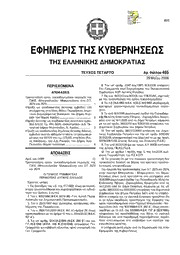
Greek Government Gazette: Part 4, 2006 no. 465

Project 1 - Workbook (3rd Edition)

Bürgerliches Recht für Betriebswirte: Allgemeiner Teil — Schuldrecht — Sachenrecht
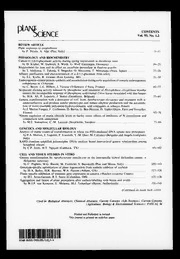
Plant Science 1993: Vol 93 Table of Contents

Capítulo I. Introducción

Demography and reproductive ecology of great frigatebirds
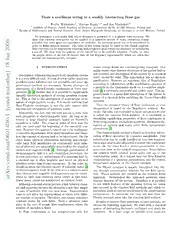
From a nonlinear string to a weakly interacting Bose gas

No Substitutions by Jim Harmon

The Plantlore and Gardencraft of Shakespeare by Rev Henry N Ellacombe

NASA Technical Reports Server (NTRS) 20080026132: Fault Management Techniques in Human Spaceflight Operations

C11 byanyothername

CAUT Bulletin June 2006 (Volume 53, Number 6)

DTIC ADA440727: Clausewitz and the Persian Gulf War

